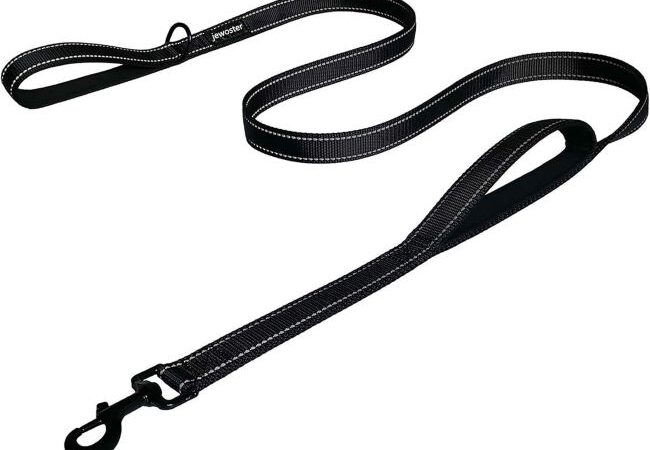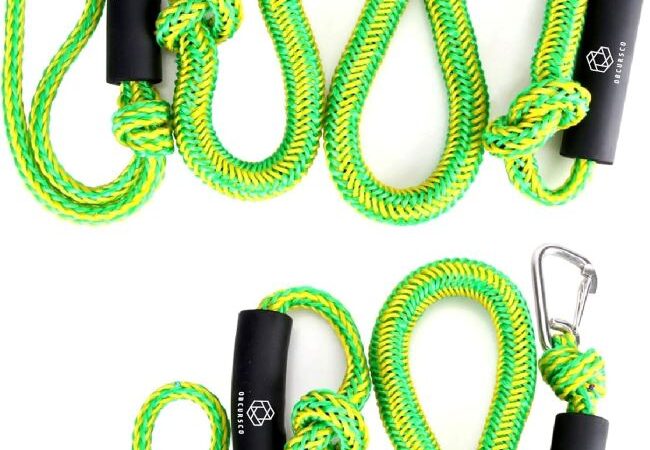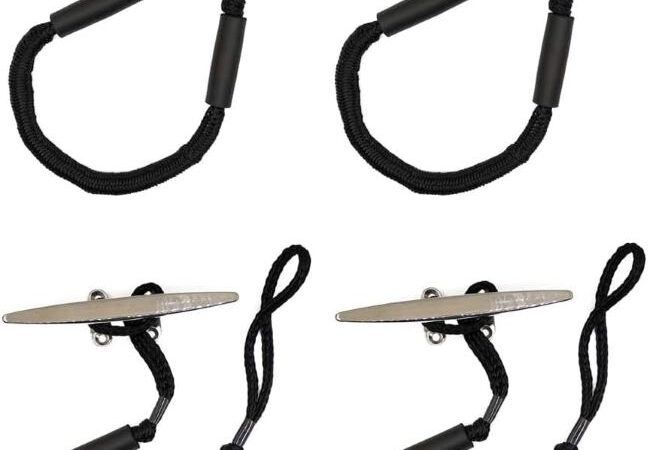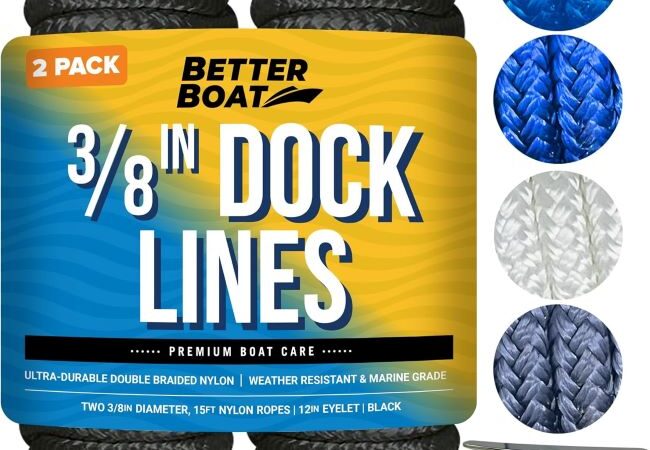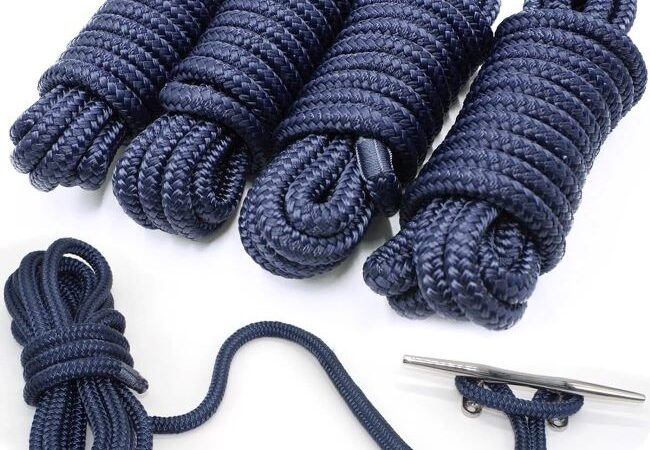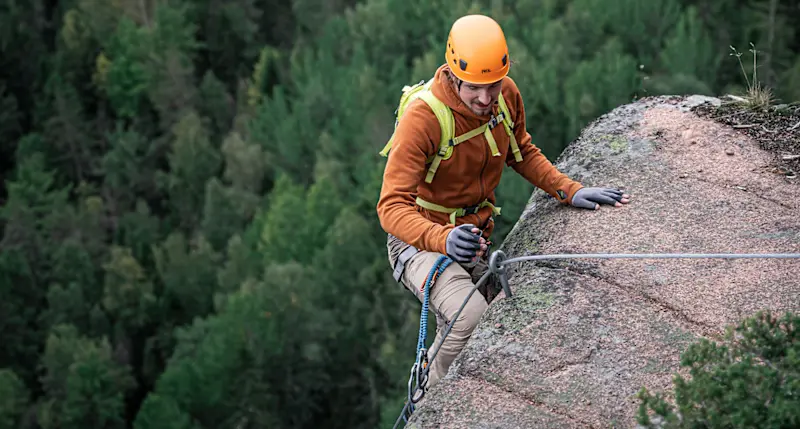
How Often Should You Replace Climbing Ropes: Safety Essentials
Replace climbing ropes if they show signs of significant wear, or at least every 5 years of regular use. Manufacturers typically recommend a lifespan of 10 years for ropes that are rarely used.
Contents at a Glance
ToggleClimbing ropes are your lifeline, quite literally, when you’re scaling vertical landscapes. Their integrity and performance are crucial for safety, demanding regular inspection and timely replacement. Climbers should adhere to the recommended usage timelines and keep an eye out for any damage or wear.
The life expectancy of a climbing rope can vary based on frequency of use, type of climbing, and storage conditions. Regular climbers might find the need for replacement much sooner than the casual enthusiast. Ensuring your rope is in top condition not only maximizes safety but also enhances your climbing experience. Remember, diligent care and proper storage extend a rope’s lifespan, keeping you safe on your climbing adventures.
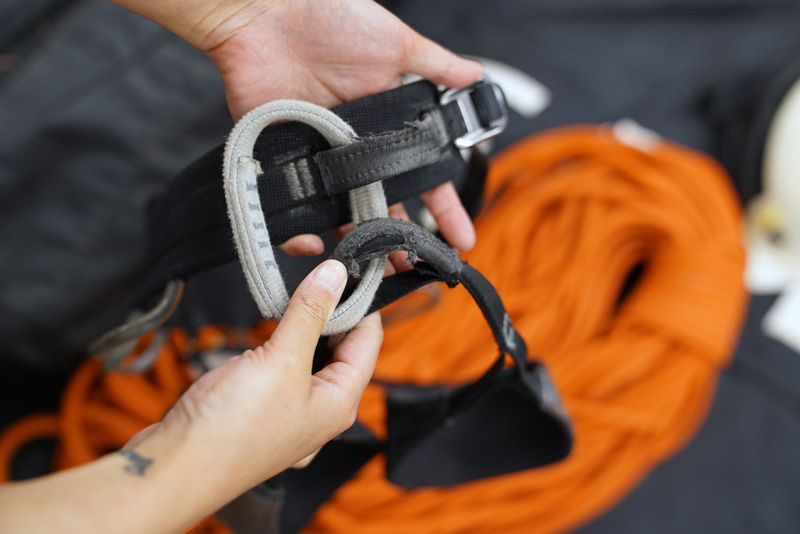
Credit: www.climbinganchors.com.au
Introduction To Climbing Rope Lifespan
Understanding the lifespan of a climbing rope is crucial for every climber. This piece of gear bears the brunt of keeping you safe on your vertical adventures. It’s not just about durability, but also about trust in the equipment that can mean the difference between a successful climb and an accident. Let’s delve into what affects a rope’s longevity and when you should consider a replacement.
Importance Of Reliable Equipment
Climbing ropes are your lifeline. They must be dependable at all times. Regular inspections and timely replacements ensure that your rope can handle the stress of climbing without fail.
Factors Influencing Rope Longevity
- Frequency of use: More climbs equal more wear.
- Types of climbs: Sharp edges can fray ropes faster.
- Environment: UV light and chemicals degrade rope fibers.
- Proper storage: Keep ropes dry and away from heat sources.
- Maintenance: Regular cleaning extends rope life.
Types Of Climbing Ropes
Understanding climbing ropes is key for safety and performance. Ropes come in different types, each suited to specific climbing activities. Knowing when to replace them is crucial for your protection.
Dynamic Vs. Static Ropes
Dynamic ropes stretch under load, absorbing the energy from falls. They are essential for lead climbing where falls are more likely. Static ropes, on the other hand, have minimal stretch, making them ideal for activities like hauling gear or abseiling.
Single, Half, And Twin Ropes
Different climbing scenarios require different rope configurations:
- Single ropes are versatile and used for a variety of climbs.
- Half ropes offer redundancy and are used in pairs, perfect for long, wandering routes.
- Twin ropes are also used in pairs but clipped together, suitable for icy or mixed terrain.
| Rope Type | Use Case | Replacement Indicator |
|---|---|---|
| Dynamic | Lead Climbing | Visible Core or Glazed Sheath |
| Static | Hauling/Aid Climbing | Stiffness or Sheath Damage |
| Single | General Climbing | Excessive Fuzziness |
| Half | Multi-pitch Trad Climbs | Uneven Diameter |
| Twin | Ice Climbing | Sheath Slippage |
Regular inspections help identify when to replace climbing ropes. Look for signs of wear, such as fraying or a reduction in flexibility. Remember, safety always comes first in climbing.
Manufacturer’s Recommendations
Manufacturer’s Recommendations guide you on when to replace climbing ropes. These suggestions help ensure safety. Always check what the maker of your rope advises.
Reading The Label
Every climbing rope comes with a label. Labels contain vital information about the rope. They tell you how to use it and when to retire it. To stay safe, always read and follow the label’s instructions closely. Key details include the number of falls the rope can withstand, impact force, and date of manufacture.
Understanding The Shelf Life
Climbing ropes have a shelf life. Shelf life refers to how long a rope can last. This period starts from the date of manufacture, not the first use. Manufacturers usually provide a range of years for shelf life. They take into account factors like materials and storage conditions.
| Rope Type | Shelf Life (Years) |
|---|---|
| Dry-treated | 7-10 |
| Non-dry-treated | 4-7 |
Check the manufacturer’s guidelines for the exact shelf life of your rope. These recommendations can vary based on the rope’s use and care. Ropes exposed to harsh conditions may need replacement sooner.
- Inspect ropes regularly for wear and damage.
- Store ropes in a cool, dry place away from sunlight.
- Follow cleaning instructions to maintain rope life.
Refer to the manufacturer’s advice for specific guidance on rope care and replacement. Trust their recommendations to keep your climbing adventures safe.
Signs Of Wear And Damage
Signs of Wear and Damage on climbing ropes are crucial for safe climbs. It’s vital to know when a rope needs replacing. This section helps you spot those signs early.
Visual Inspection Tips
Regular visual checks are a must. Look for these signs:
- Sheath damage: Check for frayed fibers or deep cuts.
- Color fading: Sun can weaken the rope.
- Stiffness: Ropes should be flexible, not stiff.
- Glazing: A shiny surface indicates heat damage.
Always inspect the entire length of the rope.
Detecting Internal Damage
Finding hidden flaws is tricky but essential.
- Feel along the rope for inconsistent soft spots.
- Check for unusual bulges or flat sections.
A rope with internal damage must be replaced immediately.
Impact Of Climbing Frequency
The frequency of your climbs plays a crucial role in determining how often you should replace your climbing ropes. Whether you’re a casual climber hitting the rocks on weekends or a seasoned pro training daily, rope lifespan can vary significantly. Understanding the impact of climbing frequency on rope wear and tear is essential for your safety.
Casual Vs. Intensive Use
Casual climbers might not need to replace their ropes as often as intensive users. Here’s a quick breakdown:
- Casual Climbers: Rope checks after every climb, consider replacing every few years.
- Intensive Users: Frequent inspections, replace at least annually or according to wear.
Keep in mind that ropes endure more stress with heavy use. This calls for closer monitoring and often, earlier replacement.
Seasonal Climbers’ Rope Care
Seasonal climbers must pay attention to rope maintenance during off-seasons. Here are some tips:
| Season End | Rope Care Steps |
|---|---|
| Clean | Wash and dry your rope to prevent dirt degradation. |
| Store | Keep in a cool, dry place away from sunlight. |
| Inspect | Check for damage before storage and before reuse. |
Proper care extends rope life, ensuring reliability for your next climbing season.
Environmental Factors Affecting Rope Life
Climbing ropes are lifelines for climbers. Like all equipment, they wear out. But did you know that the environment plays a big role in how fast they do? Factors like UV light, moisture, and chemicals can shorten a rope’s lifespan. Let’s explore how to keep your rope strong for as long as possible.
Exposure To Uv Light
Sunlight may be great for photos, but it’s tough on ropes. Ultraviolet (UV) rays can damage the fibers in your rope over time. This damage can weaken the rope and make it unsafe. To protect your rope from UV light:
- Store it away from sunlight when not in use.
- Use a rope bag or tarp to shield it outdoors.
- Inspect it regularly for signs of UV damage, like fading or brittleness.
Effects Of Moisture And Chemicals
Climbing ropes don’t mix well with water or chemicals. Moisture can lead to mildew, which breaks down fibers. Chemicals, even those in sunscreen, can corrode the rope. To keep your rope safe from moisture and chemicals:
- Keep it dry and air it out if it gets wet.
- Avoid stepping on it, especially with shoes that may have chemicals from the ground.
- Clean it with appropriate products if it gets dirty.
Regularly checking your rope for signs of wear, especially after exposure to these elements, can help extend its life. Remember, safety comes first, and taking care of your rope is taking care of yourself.
Proper Rope Maintenance
Maintaining your climbing rope is key to ensuring safety and longevity. Regular care keeps it reliable and functional. Let’s explore some essential maintenance tips.
Cleaning Techniques
Keeping your rope clean is crucial for its performance and lifespan. Dirt and grit can damage the rope fibers over time. Here are simple steps to clean your rope effectively:
- Shake off any loose dirt before washing.
- Use lukewarm water and a mild soap.
- Submerge the rope in the solution and gently agitate.
- Rinse thoroughly to remove soap and dirt.
- Hang to dry away from direct sunlight.
Remember, never use hot water or harsh chemicals as they can weaken the rope fibers.
Storage Solutions
Proper storage is as important as cleaning. Incorrect storage can lead to kinks, tangles, and degradation. Follow these guidelines:
- Avoid storing your rope wet to prevent mildew.
- Keep it in a cool, dry place away from chemicals.
- Coil the rope loosely to avoid stress on the fibers.
- Use a rope bag or a clean, dry area for storage.
By adhering to these storage tips, your rope remains safe and ready for your next climb.
Regular maintenance not only extends the life of your climbing rope but also enhances your safety on climbs. Clean and store your rope properly after every adventure!
Credit: www.reddit.com
Deciding When To Retire Your Rope
Rock climbing is an exhilarating sport. Your climbing rope is your lifeline. Knowing when to retire your climbing rope is crucial. This guide helps climbers make informed decisions about rope retirement.
Assessing Rope Fitness
Regular inspections of your climbing rope are vital. Look for signs of wear that could compromise safety. Check for these:
- Sheath damage like fraying or cuts.
- Core exposure, which is a serious concern.
- Soft spots or hard spots in the rope.
- Discoloration that suggests chemical damage.
- Any glazing from friction heat.
Use a simple table to track the rope’s history:
| Date | Use | Observations | Action |
|---|---|---|---|
| MM/DD/YYYY | Indoor Climbing | No visible damage | Continue to monitor |
| MM/DD/YYYY | Outdoor Lead | Sheath wear | Assess for retirement |
The Role Of Personal Judgment
Your judgment plays a key role in rope retirement. Consider these factors:
- Frequency of use – Daily climbers replace ropes more often.
- Type of climbing – Sharp edges and falls affect rope life.
- Manufacturers’ guidelines – Follow these closely.
- Intuition – Trust your gut if a rope seems unsafe.
Remember, retiring a rope before an accident is better than after.
Alternative Uses For Retired Ropes
Climbing ropes reach a point where they retire from their high-flying days. But retirement doesn’t mean the end. Old ropes have a second life beyond the climb. This section explores creative twists on repurposing your beloved climbing companion.
Recycling And Upcycling Ideas
Retired ropes can lead a second life through recycling and upcycling. These ideas keep ropes out of landfills and in use.
- Rope Rugs: Woven into durable mats for home or outdoor use.
- Wall Art: Coiled into unique designs, making eye-catching decor.
- Chair Weavings: Used for creating colorful seat replacements.
With a bit of creativity, old ropes transform into beautiful, functional items.
Non-climbing Applications
Old ropes serve many purposes beyond the mountain. Their durability and strength lend themselves to various tasks.
| Use | Application |
|---|---|
| Garden Lines: | Marking rows for planting. |
| Boat Docking: | Securing boats to the dock. |
| Emergency Towing: | Helping tow vehicles in a pinch. |
Consider these applications before discarding your trusted rope. It may just find a new purpose.

Credit: blog.weighmyrack.com
Staying Informed And Safe
For climbers, safety is paramount. One key aspect lies in knowing when to replace climbing ropes. Climbing ropes are your lifeline, literally. They keep you safe while you ascend or descend. Over time, ropes can wear out, lose their strength, and become unsafe. Staying informed and safe means keeping up with the latest guidelines and learning continuously to ensure your gear is in top condition.
Staying Updated With Industry Standards
Industry standards for climbing ropes evolve as technology and research advance. To ensure safety, stay abreast of these changes. Manufacturers often provide guidelines on rope lifespan and usage. These recommendations vary based on rope type, frequency of use, and climbing conditions.
- Dynamic ropes for lead climbing may have a different lifespan than static ropes used for rappelling.
- Check the manufacturer’s website periodically for updates.
- Join climbing forums and groups for first-hand advice from experienced climbers.
The Importance Of Continuous Learning
Continuous learning keeps climbers equipped with the knowledge to make informed decisions. Regularly inspect your rope for signs of wear and tear, such as fraying, discoloration, or stiffness. Know the indicators that signal it’s time for a replacement:
| Indicator | Significance |
|---|---|
| Fraying | Outer sheath damage that can compromise rope strength. |
| Discoloration | Possible UV damage or chemical contamination. |
| Stiffness | Internal damage that may not be visible on the surface. |
Engage in climbing workshops and safety clinics. They often cover gear maintenance and up-to-date safety practices. Experienced instructors can provide valuable insights on rope care and replacement.
- Attend workshops offered by local climbing gyms or clubs.
- Read climbing literature and watch instructional videos.
- Practice proper rope storage and care techniques.
Frequently Asked Questions
When Should You Replace A Climbing Rope?
Replace a climbing rope after significant wear, visible damage, or exposure to chemicals. Always retire ropes after a severe fall or after 10 years, even with minimal use. Regular inspections help determine the rope’s integrity.
How To Tell If Climbing Rope Is Bad?
Check your climbing rope for fraying, cuts, or significant abrasions. Examine for soft spots or hard, stiff areas, which indicate core damage. Pay attention to discoloration or unusual odors, which can signify chemical damage. Replace the rope if you notice any of these signs.
How Long Can You Keep A Rope?
You can keep a rope indefinitely as long as it’s stored properly and remains undamaged. Regularly inspect it for wear and retire it if it shows signs of significant deterioration.
Does Rope Have An Expiration Date?
Rope does not have a fixed expiration date, but it degrades over time. Factors like usage, material, and storage conditions affect its lifespan. Regularly inspect rope for wear and damage to ensure safety. Replace it as needed based on its condition.
Conclusion
Ensuring your safety while climbing is paramount, and regularly replacing climbing ropes is key. Aim to assess your rope after significant falls or at least every few years. Stay updated on the latest guidelines and trust your instincts—if your rope shows signs of wear, don’t hesitate to replace it.
Safe climbing always comes first!
{ “@context”: “https://schema.org”, “@type”: “FAQPage”, “mainEntity”: [ { “@type”: “Question”, “name”: “When should you replace a climbing rope?”, “acceptedAnswer”: { “@type”: “Answer”, “text”: “Replace a climbing rope after significant wear, visible damage, or exposure to chemicals. Always retire ropes after a severe fall or after 10 years, even with minimal use. Regular inspections help determine the rope’s integrity.” } } , { “@type”: “Question”, “name”: “How to tell if climbing rope is bad?”, “acceptedAnswer”: { “@type”: “Answer”, “text”: “Check your climbing rope for fraying, cuts, or significant abrasions. Examine for soft spots or hard, stiff areas, which indicate core damage. Pay attention to discoloration or unusual odors, which can signify chemical damage. Replace the rope if you notice any of these signs.” } } , { “@type”: “Question”, “name”: “How long can you keep a rope?”, “acceptedAnswer”: { “@type”: “Answer”, “text”: “You can keep a rope indefinitely as long as it’s stored properly and remains undamaged. Regularly inspect it for wear and retire it if it shows signs of significant deterioration.” } } , { “@type”: “Question”, “name”: “Does rope have an expiration date?”, “acceptedAnswer”: { “@type”: “Answer”, “text”: “Rope does not have a fixed expiration date, but it degrades over time. Factors like usage, material, and storage conditions affect its lifespan. Regularly inspect rope for wear and damage to ensure safety. Replace it as needed based on its condition.” } } ] }
